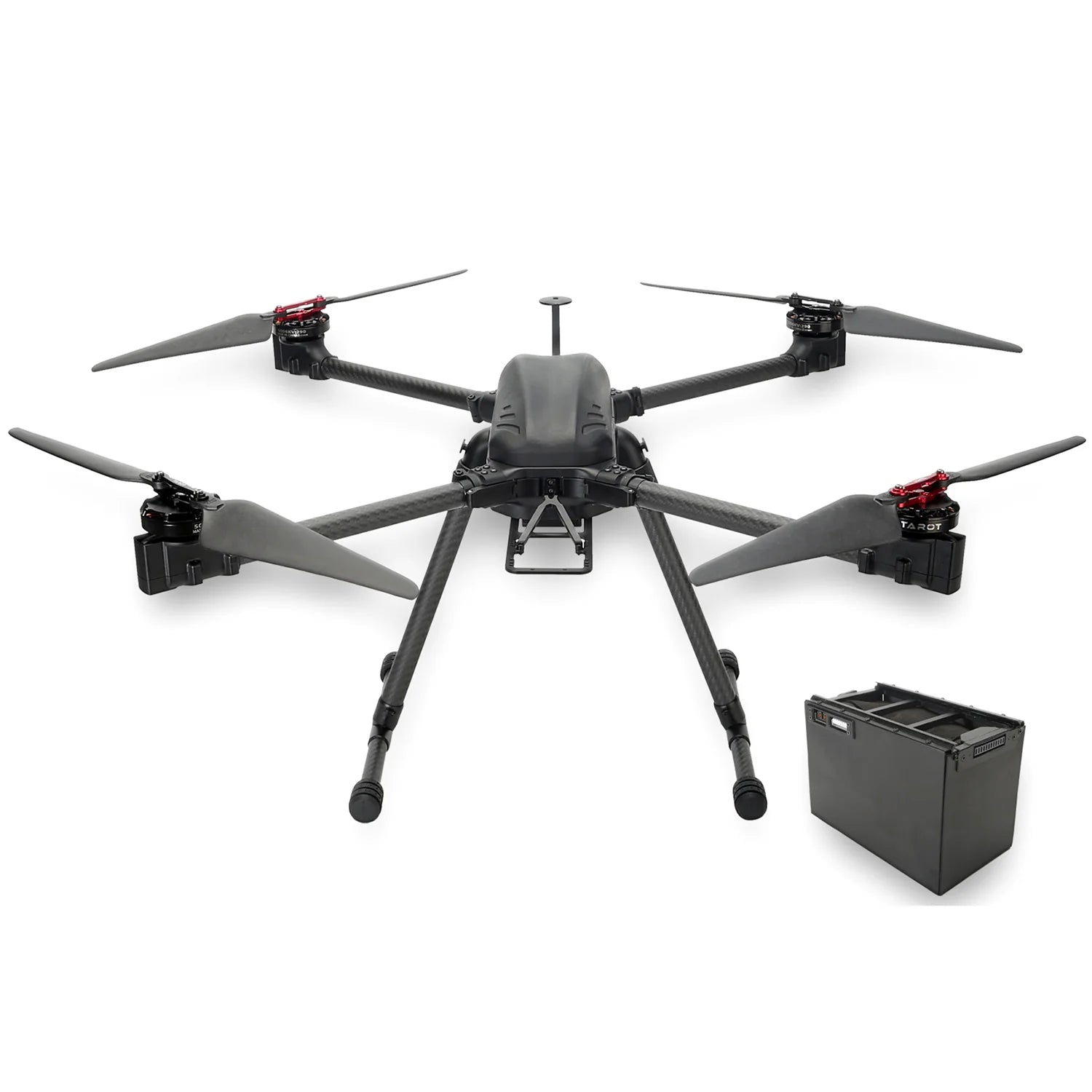The world of drones has undergone a dramatic transformation during the past decade driven by rapid advances in technology as well as innovative applications. Drones, once confined to leisure, now play an important role in commercial, industrial mapping and heavy-lifting operations.

Image credit: rcdrone.top
Industrial drone is redefining workflow in a demanding environment by offering unmatched precision, efficiency, and safety. Drones are vital for industries like mining, construction and energy.
Unmatched Capabilities:
Rugged Design: Built using ultra-durable materials to withstand extreme temperature, powerful winds and rough handling.
Advanced Sensors Integration of LiDAR thermal imaging, LiDAR, and gas detection sensors to ensure accurate data collection in challenging scenarios.
Autonomous Operations: Capable of conducting automated inspections and surveys and reducing human involvement in areas of risk.
Reduce the time and cost that are associated with traditional methods of monitoring and inspection.
Key Applications:
Monitoring the structural integrity of offshore platforms, pipelines and bridges.
Environmental impact assessment in industrial zones
Performing volumetric analysis in open-pit mining.
The industries can reduce operational risks by replacing traditional inspections by using drone technology.
Commercial Drones – improving business processes
Commercial drones have revolutionized way businesses work by providing new solutions that improve efficiency and produce superior outcomes. They are widely used in various sectors, such as logistics, agriculture and real estate.
Multi-Functional:
Smart Agriculture: Observe the health of crops and detect inefficiencies in irrigation and determine soil condition using multispectral imaging.
Dynamic marketing: Capture aerial photos with high quality for tourism, real estate and film production.
Drone-powered last mile delivery provides fast and eco-friendly solutions for urban and rural areas.
Value-Driven Insights:
Advanced tools for data analysis and imaging software provides businesses with actionable insight to optimize processes, customer satisfaction and business processes.
Commercial drones have been viewed as strategic assets for businesses in order to stay on top of a rapidly changing market.
Mapping drones: setting new standards for precision
Mapping drones provide accurate maps and models that are high-resolution. They’re therefore extremely useful in the field of urban planning as well as environmental research.
Cutting-Edge Technology:
Photogrammetry and LiDAR provide unbeatable accuracy for topographic measurement and volumetric measurements.
High-Resolution Imaging: Capture the intricate details of roads and terrain at low altitudes.
Real-Time Processing Real-Time Processing: Instant access to data crucial for projects that require time.
Applications that span Industries:
Urban landscapes as well as design for the transport network.
Monitoring wildlife habitats and ecosystems.
Examining the extent of damage and arranging resources that will aid in recovery from disasters.
The ability of mapping drones to swiftly and accurately create maps of difficult terrain is changing the way we interact with our world.
Heavy Lift Drones – Redefining Aerial Logistics
Heavy lift drones are designed to transport large payloads, changing the way construction and logistics are conducted, and emergency response situations.
Robust Features:
High Payload: able carry loads from construction materials to medical equipment.
Precision Navigation: Equipped GPS, AI and obstacle detection systems to ensure accurate delivery.
Customized Payload Adjustability (CPA): Tailored design to meet industry specific requirements, from humanitarian aid to instruments for research.
Notable Use Cases
Moving heavy equipment and tools across large construction sites.
In times of emergencies and natural disasters it is crucial to ensure that you have the right supplies.
Assisting in remote infrastructure development projects.
The unnoticed heroes of modern logistics are the heavy lift drones that can bridge the gap between efficiency as well as accessibility.
Drones of Tomorrow: Innovation meets Possibility
Drones are set to grow at a rapid pace with new developments and applications are coming soon.
Future Trends:
Swarm technology: A group of drones working together to complete large-scale tasks efficiently.
AI and Machine Learning: Enhancing decision-making and navigation capabilities, as well as obstacles-avoiding capabilities.
GPS-Denied navigation: Expanding the drone’s capabilities underground or in areas with a lot of obstructions.
Expanding the Applications
Healthcare Delivery Drones are used to transport vaccines, organs and medical supplies to remote locations.
Sustainable efforts include tracking wildlife while monitoring deforestation as well as assessing the impact of climate change.
Research and Education: Redefining the way researchers and scientists study hard to reach areas.
Conclusion
From enhancing the efficiency of industries to revolutionizing the way we look at logistics and environmental conservation drones are crucial in shaping modern solutions. Industrial Drones are proving their worth across all industries, which opens the way to more creative applications.
Drones will become more important in the future as technology advances, bringing an array of solutions that can be scalable to industries and society. The sky is the only limit for drones, as they continue to unlock new possibilities and expand our understanding of technology’s potential.
